Constructed to elevate the souls of men and women to heaven, the Church of Our Lady of Pilar (the Pillar) was commissioned in Malta by the Aragonese Knights to praise God and the Virgin Mary and inspire all those who entered the space. After Auberge d’Aragon was built, by the Langue of Aragon, in Valletta, the need for a chapel to serve the knights and community was strongly felt, and the Aragonese knights took up the mantle to sate their needs.
The church is on West Street, very close to the Auberge, and right in front of the house where San Gorg Preca was born on February 12, 1880.
Nuestra Señora del Pilar in Malta
Malta is still dotted with buildings and artifacts from the era of the Knights of St. John of Jerusalem, today also known as the Knights of Malta. The Order’s first years in Malta were mostly focused on strengthening and consolidating the fortifications of the Grand Harbor. Valletta was built after the miraculous victory of the Great Siege of 1565, against the Ottoman Empire, that the Knights and Maltese had experienced together.
The Knights distributed the new City according to their particular needs, for instance, they erected their castles all around it, not in a dedicated area called il Collachio. Nevertheless, the necessary buildings were planned and erected so as to have a properly structured city, and as one would expect, a fortified city of the Order of St. John. Apart from their castles, they also built several palaces, the conventual church, the hospital, and the national churches of the various Langues (languages). The national church erected by the Spanish Knights (Araogonese langue) was dedicated to Our Lady of the Pillar.
The happenings of Nuestra Señora del Pilar
Mary’s title of Mediatrix is based on her co-operation in the Incarnation and in the Redemption of Mankind. Through her “yes,” she became the Theotokos, and, as “the New Eve,” she is the mother of all the living.
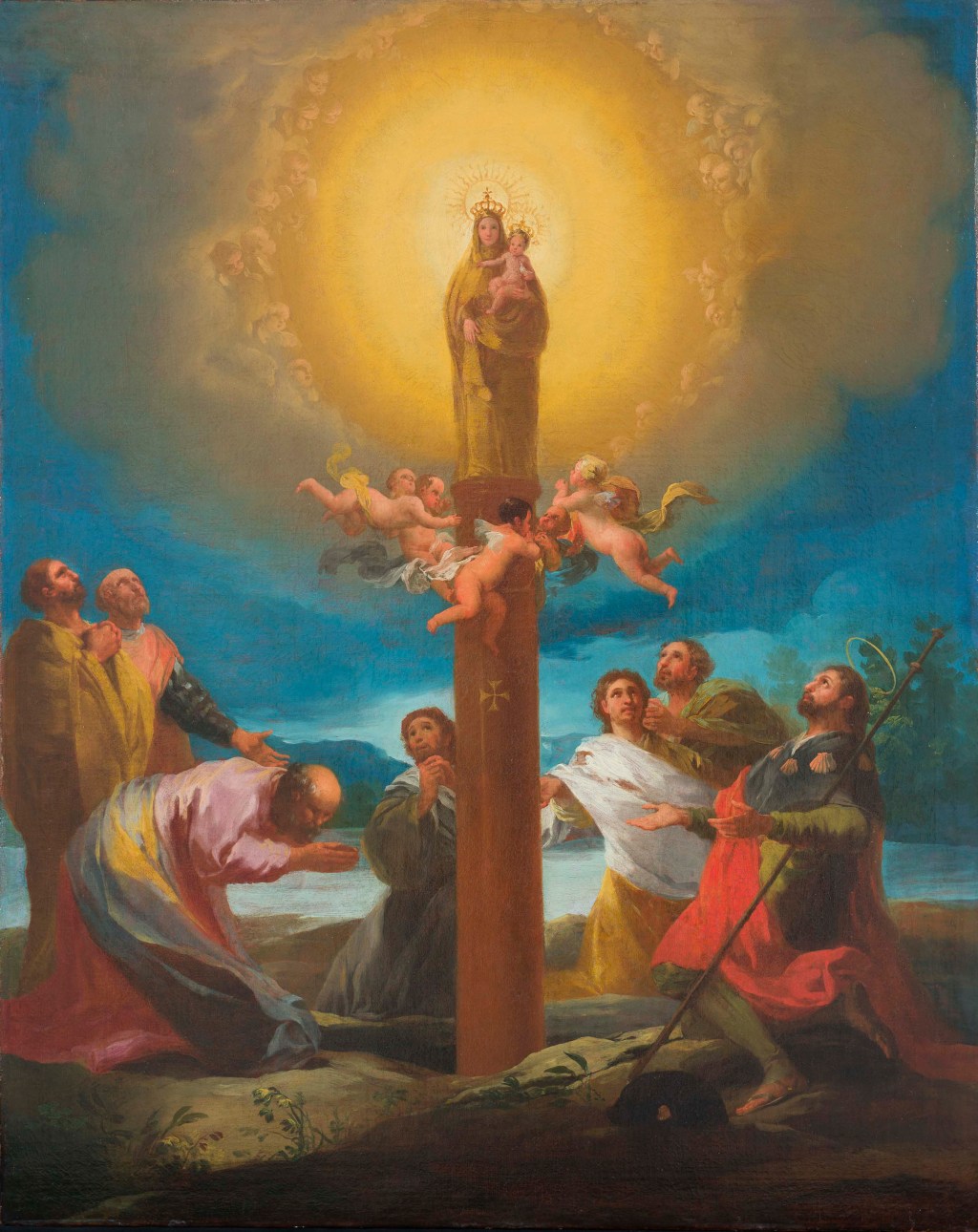
In his book Against Heresies, Ireneus (120 – 202) assures us that:
“… through the obedience which was exhibited by Himself when He hung upon a tree, the effects also of that deception being done away with, by which that Virgin Eve, who was already espoused to a man, was unhappily misled – was happily announced, through means of the truth spoken by the Angel to the Virgin Mary, who was also espoused to a man. For just as the former was led astray by the word of an angel, so that she fled from God when she had transgressed His word; so did the latter, by an angelic communication, receive the glad tidings that she could sustain [portaret] God, being obedient to His word. And if the former did disobey God, yet the latter was persuaded to be obedient to God, in order that the Virgin Mary might become the patroness [advocata] of the Virgin Eve. And thus, as the human race fell into bondage to death by means of a virgin, so it is rescued by a Virgin; virginal disobedience having been balanced in the opposite scale by virginal obedience…”
Since the beginning of Christianity, Mary has visited us regularly. In fact, the first Marian apparition was to the Apostle James in Spain. Unlike future apparitions, this one took place when Mary was still alive.
Tradition has it that the Apostle James was directed by Our Lady to go to Spain in the city of Cesarea Augusta, later becoming Zaragoza, to proclaim the Good News. The Blessed Virgin also promised St. James that when he would be needing most her intervention in his difficult mission to the pagans, she would support him directly.
Such difficulties did arise, and in 40 AD, while James was praying on the bank of the River Ebro, outside Zaragoza, the Virgin appeared to him, holding the Child Jesus, standing on a pillar, hence Our Lady of the Pillar (Spanish: Nuestra Señora del Pilar). She asked the Apostle and his eight followers to build a church on this site, promising that:
“It will stand from that moment until the end of time in order that God may work miracles and wonders through my intercession for all those who place themselves under my patronage.”
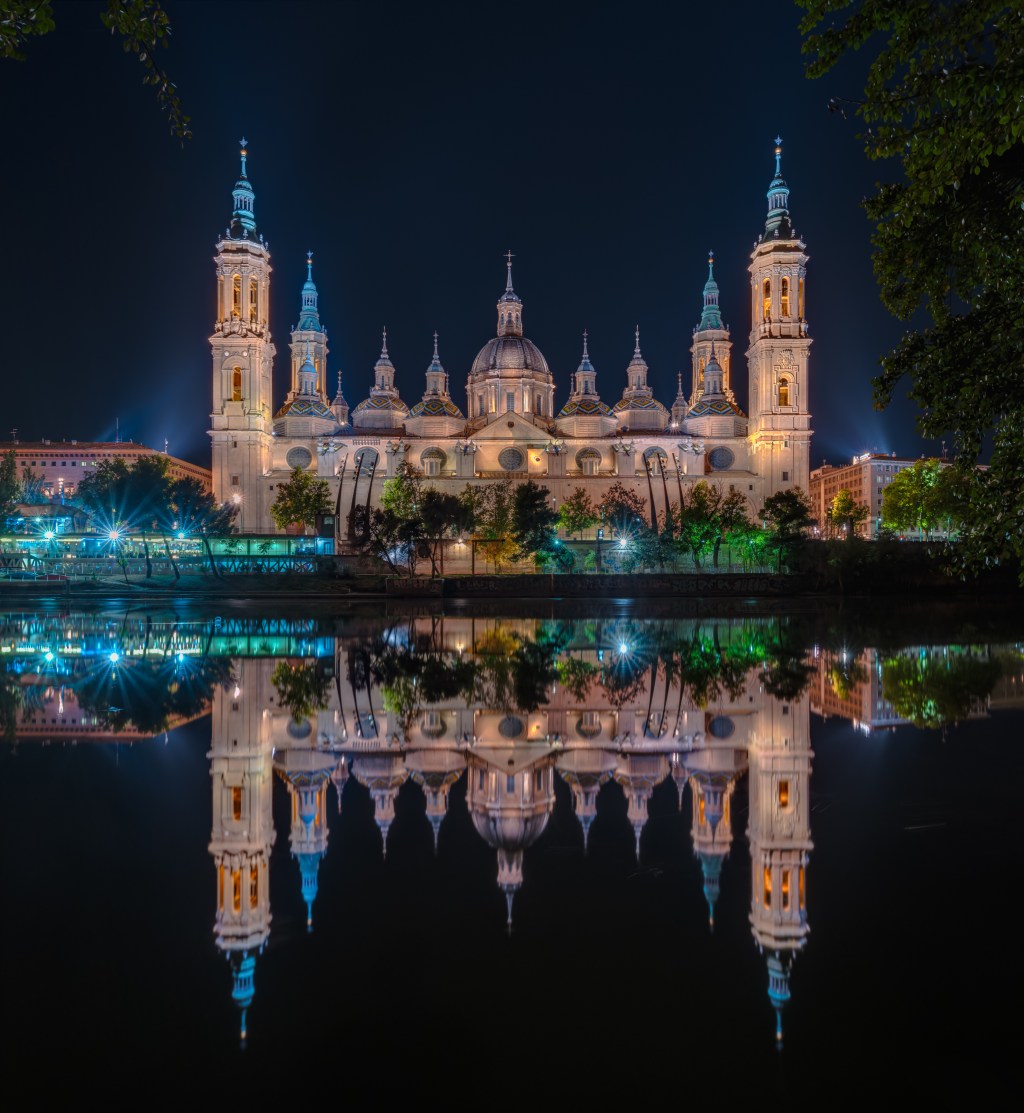
The church of Nuestra Señora del Pilar remains standing to this day, and is indeed the magnificent Cathedral-Basilica of Zaragoza, and the National Marian Shrine of Spain. It survived invasions and wars – in the Spanish Civil War of 1936-1939, three bombs were dropped on the church and none of them exploded.
The National Marian Shrine of Malta is that of Our Lady of Mellieħa, which houses the ancient Icon of the TheotokosHodegetria (She Who Shows the Way to the Savior). Both sanctuaries are members of the European Marian Network, which connects 21 Marian shrines in Europe. It was established in 2003, and is promoted by the Holy See.
Nuestra Señora del Pilar is also the patron of Spain and all Hispanic peoples. October 12, 1492, the feast of the Virgin of the Pillar, is the day Christopher Columbus first sighted land, and when the first Mass in the Americas was celebrated.
The church in Malta
The Valletta church, built in 1670 by the Ballius of Caspe’, Fra Felix Inniquez de Ayerbe, soon became his own burial site. Fra Felix’s wish was to be buried in front of the altar, and so he was in 1691.
In 1708 his grandson, who for 14 years was the administrator of the Auberge d’Aragon and a great devotee of Our Lady of the Pillar, decorated his tomb with a marble tombstone.
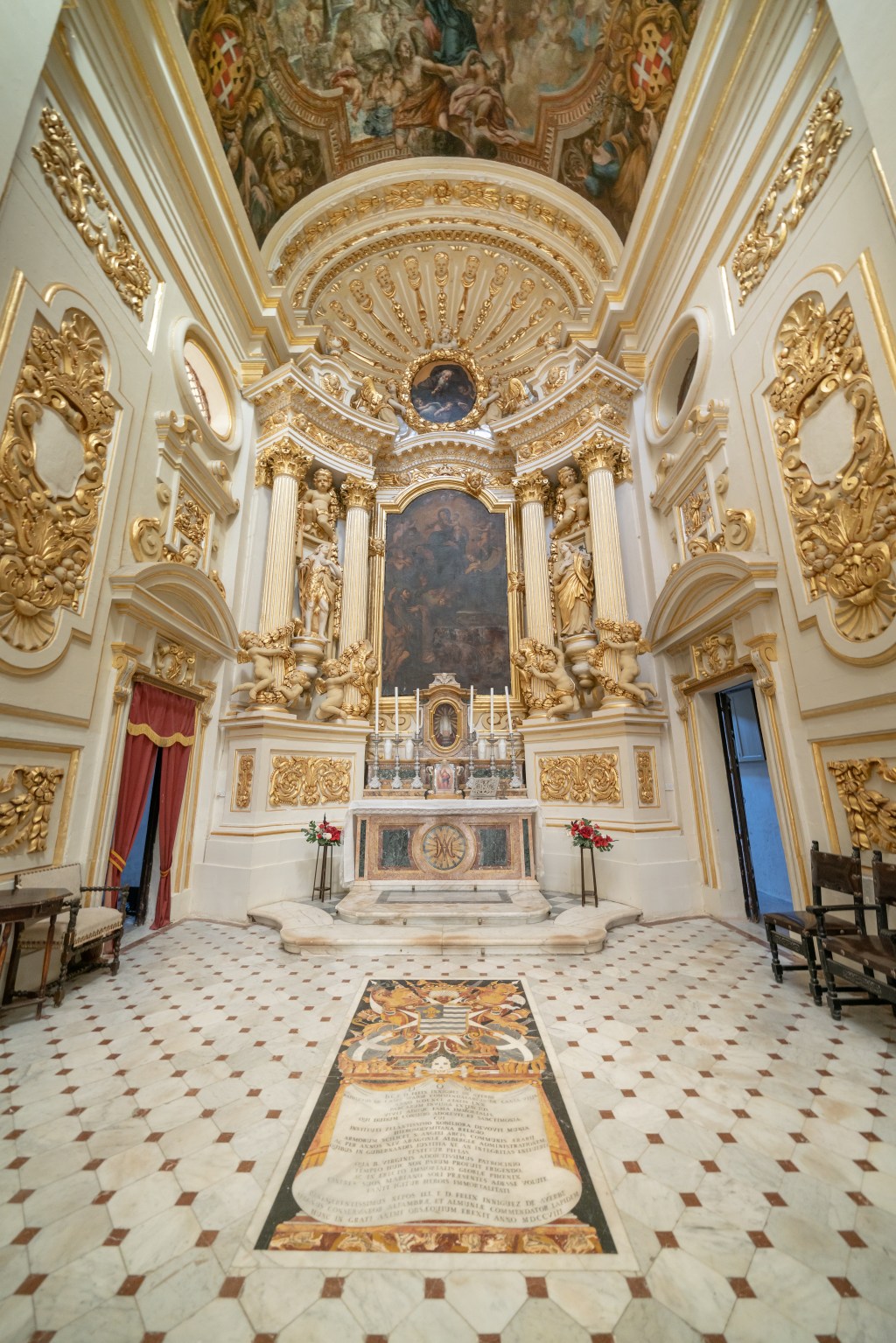
In 1693 disaster struck the church as parts of it were damaged by a violent earthquake, but it was rebuilt under the patronage of Grandmaster Ramon Perellos y Roccaful. In 1718, resident architect and engineer Romano Carapecchia was entrusted with the task of remodeling the chapel. Faced with the challenge of building a functional yet stylish building on land that was quite restrictive, he delivered greatly, leaving us today with a gem of High Baroque architecture.
Carapecchia, who was trained at the well-known Accademia di San Luca in the Eternal City, introduced Roman Baroque in the new City, where we also find the churches of St. James, St. Catherine of Alexandria and St. Barbara, Santa Catherine of Italy and Our Lady of Victory near Auberge de Castile.
His distinct taste and talent is reflected in the genius with which he managed to include all the features required by canon law in building new churches. The façade is of a Composite order, of two styles superimposed on each other. In the lower part the door is flanked by two columns. At the side are two empty niches and double pillars. This is repeated in the upper part, but instead of the door there is a large window. The far top has a triangular pediment strected over the entire width of the façade.
This was a modern style for those times which was subsequently copied by Maltese architects. Carapecchia designed a square nave at the entrance with an octagonal area behind it, roofed with a high dome. The choir area is rectangular too, and the apse has a semi-circle shape with the altar within it. All the interior is decorated with beautiful and elegant sculpture, but the climax of this magnificance is the reredos (or retable) behind the altar. On each side of the altar there are a pair of Composite style columns, having groups of angels in their lower parts and statues of St. John the Baptist and St. James between them.
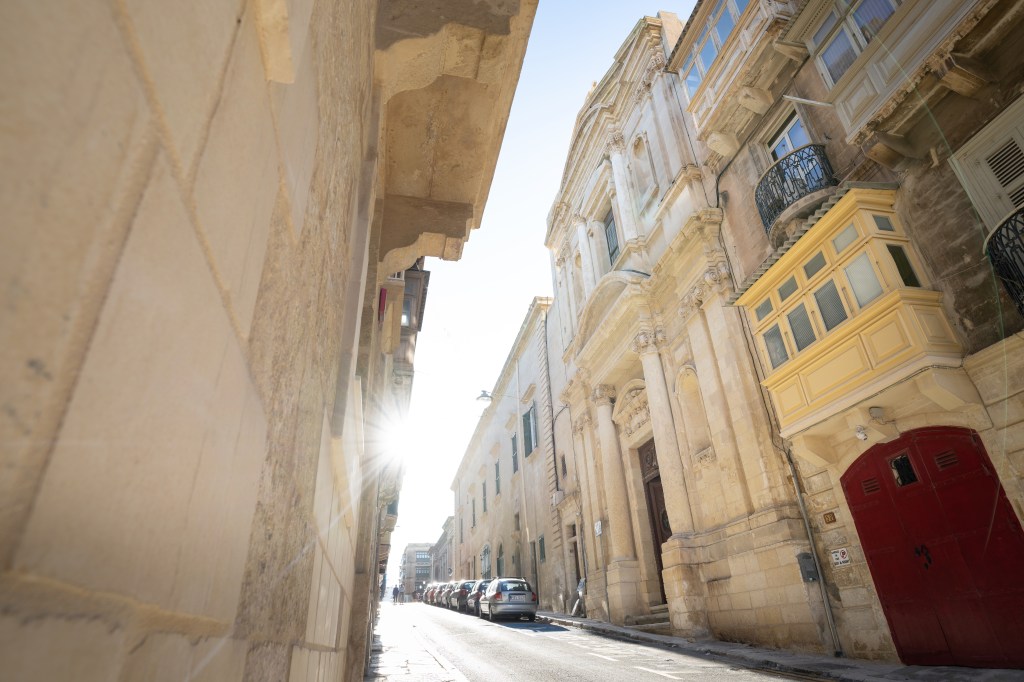
The entablature above the columns is full of sculpture and in the middle two, angels are holding an oval painting of the Eternal Father. On its sides there are two pediments and further up, an apse full of cherubs and floral sculpture. All this is gilded with gold. Under the dome there are two other altars. A niche houses a small statue of the Madonna on a marble column, Our Lady of the Pillar.
Apart from the elaborate sculptures, the church houses numerous paintings by renowned Maltese artists. The titular painting is the creation of Stefano Erardi, depicting the Madonna’s apparition to St. James. On the ceiling, Gian Nikola Buhagiar painted the Coronation of Our Lady. On the edge of this painting there is the coat-of-arms of the Grand Master Ramon Perellos y Roccaful, since he donated it to the church. In the nave there are four large paintings showing the Nativity of Our Lady, her marriage with St. Joseph, the Annunciation of the Messiah, and the Visitation to St. Elizabeth.
The balcony of the organ is decorated with a fresco, showing Grand Master Perellos welcoming the Ballius of Maiorca Fra Raimondo de Soler, who was also a benefactor of the church, and the fleet of the Order. Indeed, the coat of arms of Fra de Soler can also be seen on the holy water fount. Under the balcony there are two other portraits of the Grand Master Perellos and the Ballius Inniquez. Two other paintings illustrate St. Philip Neri and St. Aloysius de Gonzaga.
The side altars, made at the beginning of the 20th century, are dedicated to the Sacred Heart of Jesus and St. Joseph. In 1866, an institute of Christian doctrine for girls was established in the church. Although no longer serving the Aragonese Knights, the chapel continued to play an important role in the community, having for years been both a place for the teaching of Catholic doctrine, and a school run by the Franciscan Sisters of Valletta.
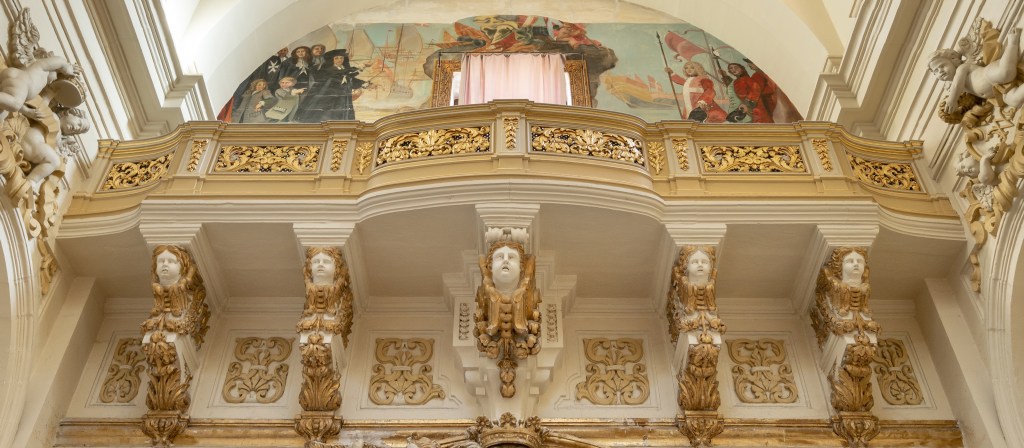
Today
In 2007, the church of Our Lady of the Pillar was entrusted to Heritage Malta. The church underwent substantial restoration and conservation works, bringing it back to all its glory and beauty. The church is open by appointment. For further information including access, kindly visit the Heritage Malta site here.
References
Some information was derived from the official Heritage Malta website
Brincat A. M. Il-knisja tal-Madonna tal-Pilar – Valletta (The church of Our Lady of the Pillar – Valletta). Kappelli Maltin
Nuestra Senora del Pilar (Our Lady of the Pillar). Catholic News Agency

